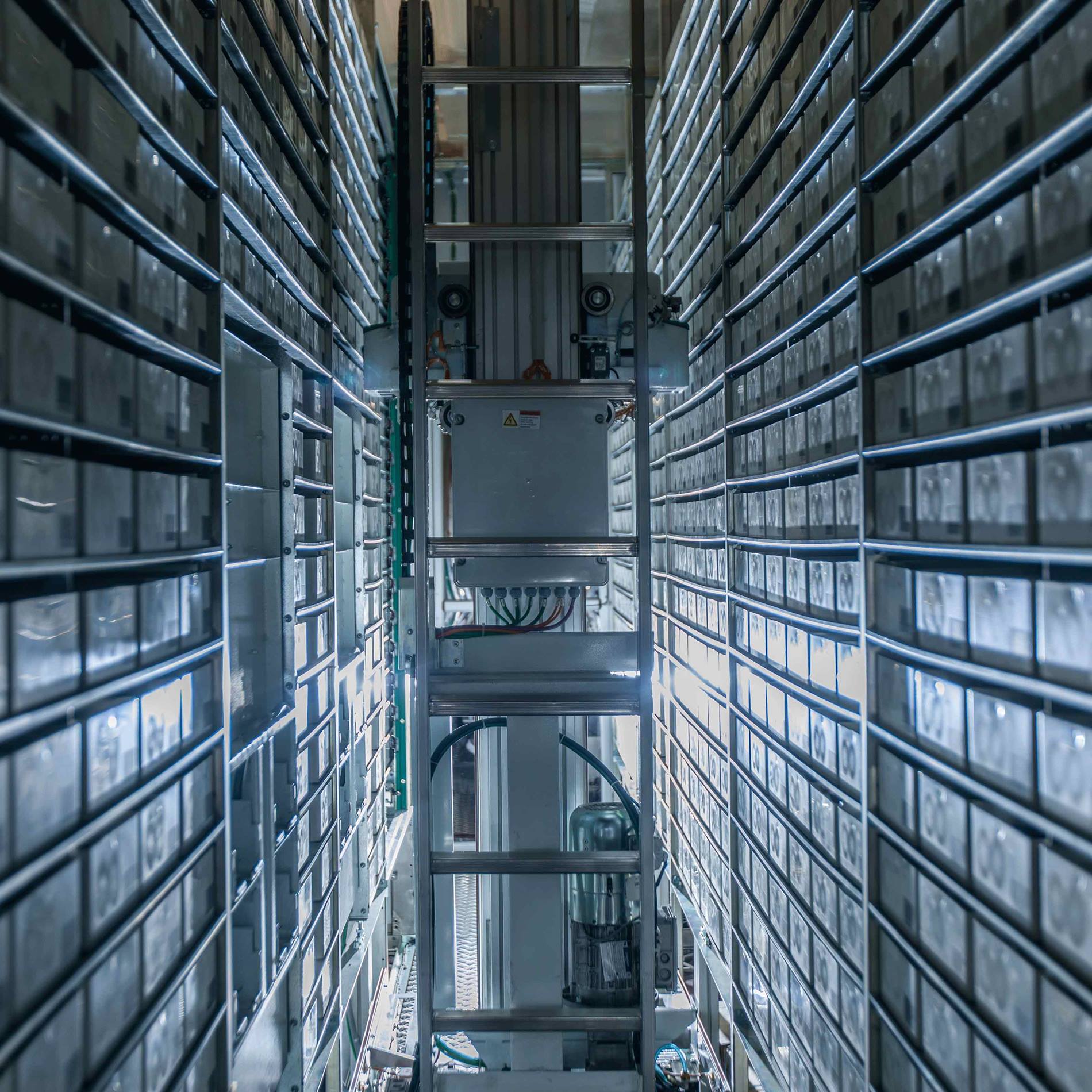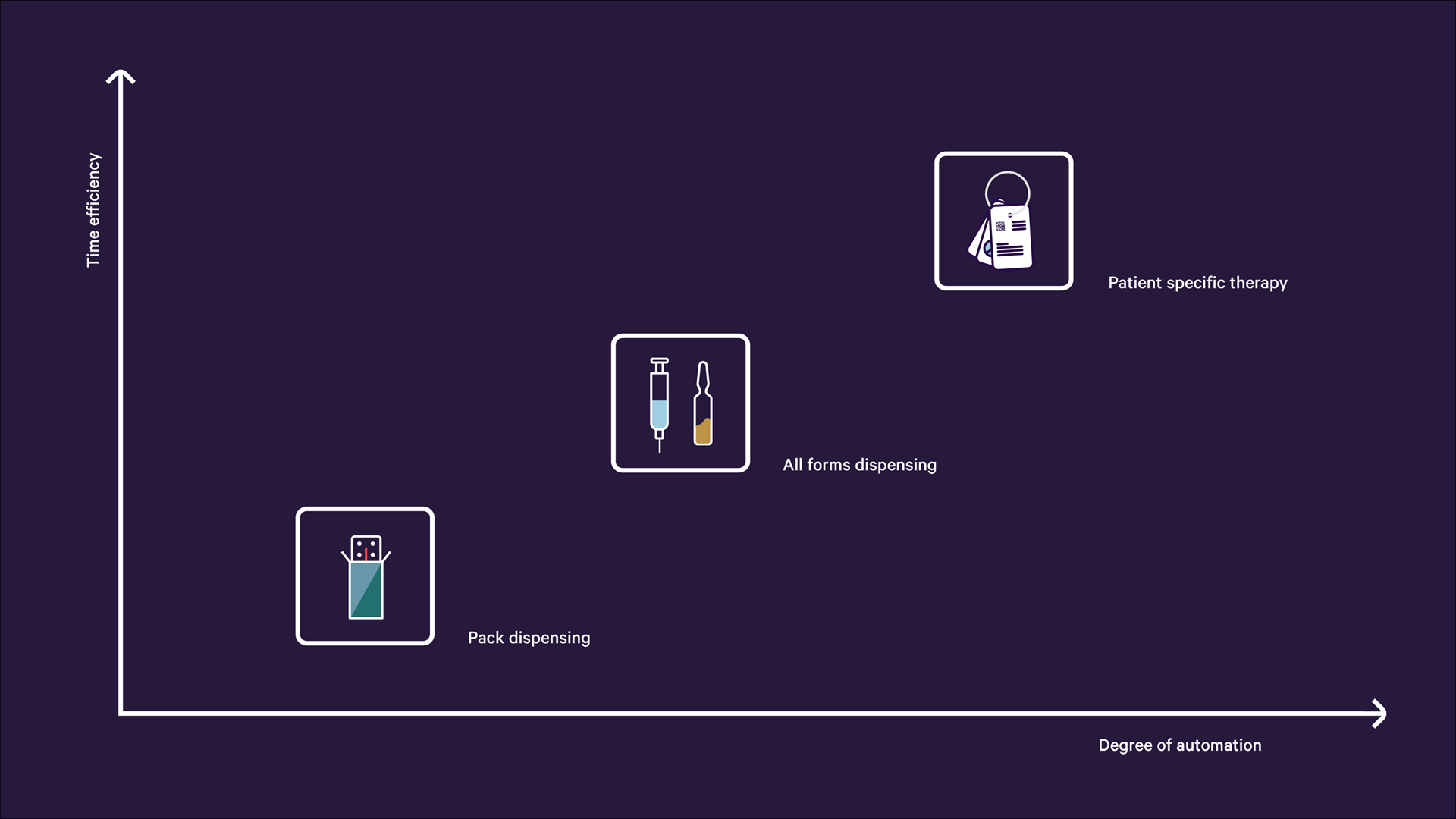What is automated drug dispensing?
Automating the medication management processes is a key element to simplify the daily clinical routine:
- Pharmacists will be relieved from the labor-intensive distributive functions
- Patient care will be enhanced by both pharmacists and nurses
- Traceability and storage of medications will be improved
- Availability of drugs will be increased
Automated dispensing in particular can be used on the one hand for the storage, and on the other hand for the retrieval of drugs. The storage of new medications can be fully or semi-automated, depending on the number of different forms of medication. The robotic dispensing system independently takes over the optimal and space-saving sorting and inventory management of the medicines in pharmacies. Pharmacy automation solutions independently detect critical stock levels and trigger a message.





